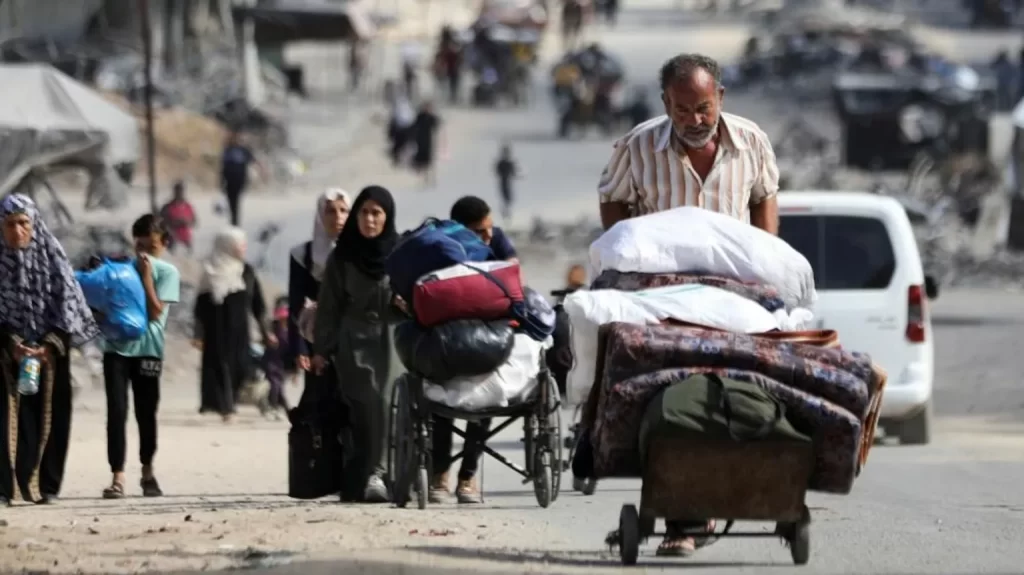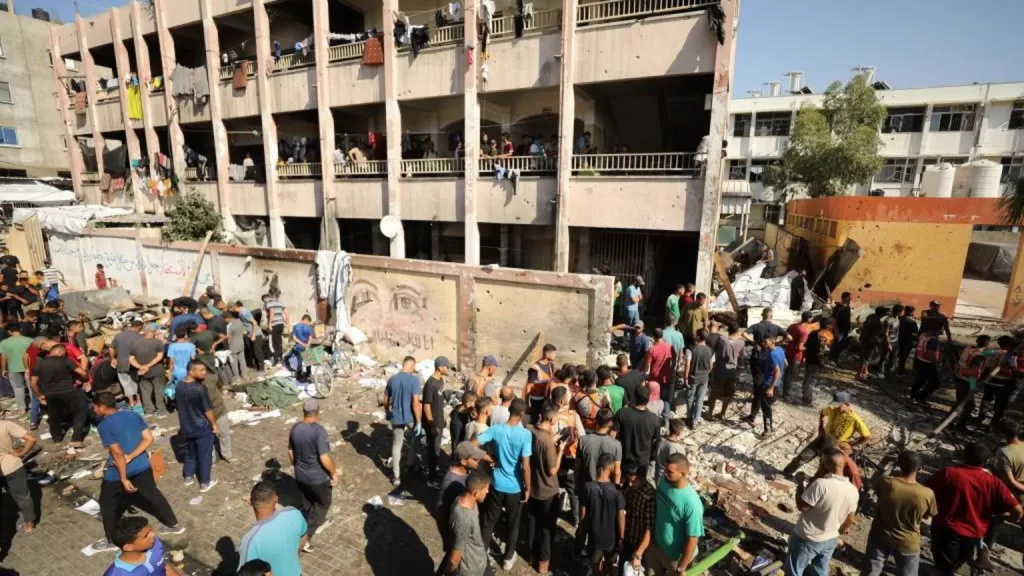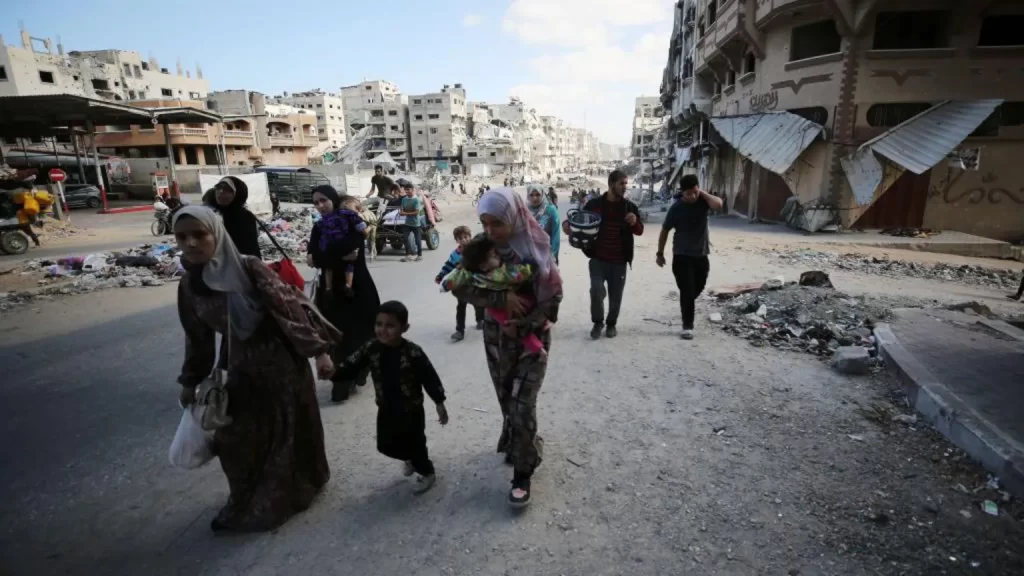The Israeli military has escalated its offensive in northern Gaza, issuing new evacuation orders and intensifying operations in areas like Jabalia refugee camp. These actions have sparked concerns among Palestinians, UN officials, and humanitarian organizations about a potential “surrender or starve” strategy.

On Saturday, the Israeli Defense Forces (IDF) posted a message on social media urging residents in the ‘D5’ area of northern Gaza to move south immediately, describing the region as a “dangerous combat zone.” The message emphasized that military operations would continue “with great force… for a long time.”
The evacuation orders come as the IDF attempts to prevent civilians from returning to areas after temporary displacements. Reports suggest that the military is channeling families in one direction only, down the main north-south route, Salah al-Din Road.
Humanitarian agencies report dire conditions in both northern and southern Gaza. The World Food Programme states that no food aid has entered northern Gaza since October 1, with mobile kitchens and bakeries forced to halt operations due to airstrikes.

Some experts speculate that these actions may be part of the controversial “Generals’ Plan,” proposed by retired senior officers including Maj-Gen (ret) Giora Eiland. This strategy aims to force Hamas’s surrender by increasing pressure on the entire population of northern Gaza.
Eiland outlined the plan’s core: “After that time, all this area will become to be a military zone. And all the Hamas people will still, though, whether some of them are fighters, some of them are civilians… will have two choices either to surrender or to starve.”

The IDF has not confirmed whether it has adopted this plan partially or fully. However, the ongoing operations and evacuation orders have raised significant humanitarian concerns and questions about the long-term strategy for Gaza’s northern regions.
As the conflict intensifies, international observers continue to monitor the situation closely, with growing alarm over the humanitarian impact and potential long-term consequences of the current military strategy.



